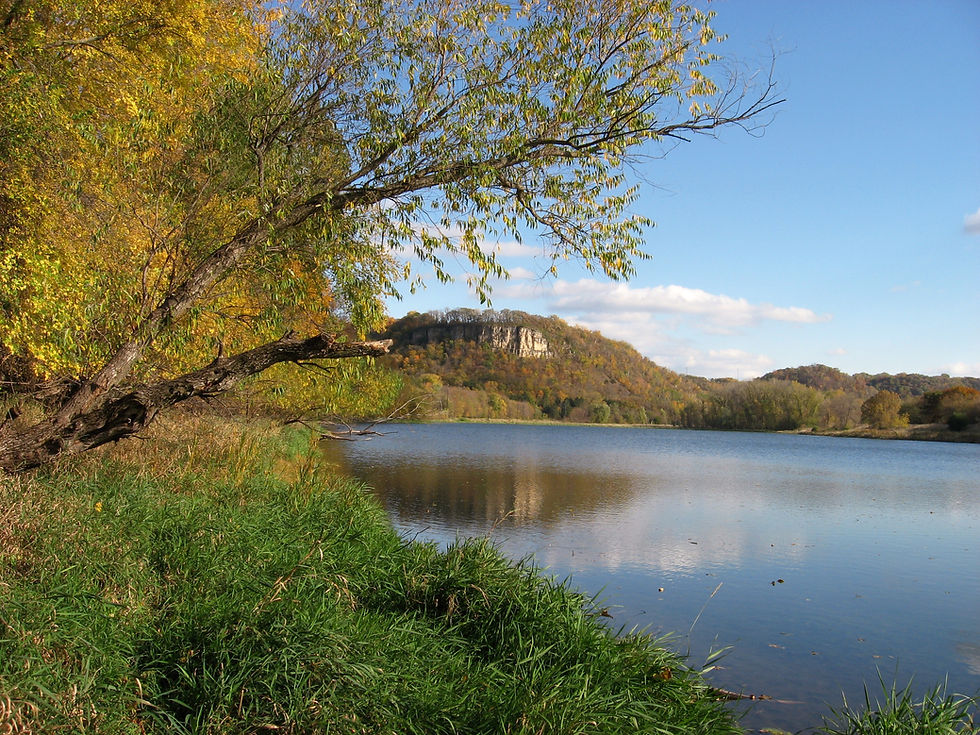"We Can Make A Difference"
- wacoutanaturenotes
- Jun 22
- 3 min read

In the mid-1900's there was a steep decline in bluebird numbers caused by habitat loss, competition from non-native birds such as starlings and English sparrows and the use of pesticides.
By 1970, bluebird numbers had plummeted by 90% in some areas. With enthusiastic volunteer efforts to provide artificial nesting boxes, their populations have recovered significantly.
I know of four artificial boxes producing successful nesting results just in our immediate neighborhood this spring.

As this photo demonstrates, the female bluebird builds it's nest almost exclusively by loosely weaving various dried grasses. In many cases, these nests are built in a single day. Clutch size is typically from 4 to 6 eggs.
The female will lay one egg per day until her clutch size in met. At that point, incubation will start and lasts from 11 to 19 days.
Once the eggs hatch, the nestlings will grow and develop for the next 17 to 21 days. A volunteer at Frontenac State Park, recently reported 27 fully developed nestlings dead in 7 different boxes. It is thought these birds were killed by buffalo gnats attracted by carbon dioxide escaping from the nest box. Some folks have reduced that threat by spraying vanilla in the box to mask the CO2 .

Insects found on the ground such as caterpillars, crickets and spiders are the main source of food bluebirds young and old.

Most young birds have to be taught how and what to eat. Here an adult is teaching it's young how to consume dried meal worms we put out on the top of the nesting box.

Starting in the spring of 2020 and the creation of the wonderful Wacouta Prairie, I have observed a pair of kestrels perched on the wires along Wacouta Road for a few weeks in search of a possible nesting site. With none available, they have left for more promising locations.

Kestrels are our smallest falcons and one of the most colorful of all raptors.They frequently hunt along the edges of prairies and road ditches for insects, rodents and small birds.

With donations from Martha Harris and Dave Mcdougall a new kestrel nesting box has been located in the prairie adjacent to Wacouta Road. Martha donated the nesting box and Dave provided materials for installation. Dave also provided most of the effort to complete the project.
Two additional thank you's are in order. First, to Scott and Anne Jones for their approval and encouragement. Second, to Diane Mueller for sharing the link to the kestrel video produced by the Cornell Lab of Ornithology. Please click on the link below to view the video. Upon finishing, please rejoin the blog below.

One of the first plants to appear and thrive in the prairie following the prescribed fire were spiderworts. These prairie plants were so named because of the angular leaf arrangement appearing like a squatting spider.
Spiderwort flowers open up in the morning and wilt by afternoon.

Another plant that has done very well post fire is the Wild Indigo.

As I was paddling my canoe up into Wacouta Bay in the early morning of June 11, I observed at quite a distance a group of adult Canada geese and goslings swimming near shore.
When I was within 50 yards, the adults gathered the young goslings up onto shore to protect them. It typically takes 2 to 3 months from the time of hatching before they are capable of flight.

On June 15th, we observed our first red-headed woodpecker at our bird feeder in several years. In the June issue of the Frontenac State Park Association newsletter, Janet Malotky reports several red-headed woodpeckers are being observed in the park this year.
She suspects the loss of many beautiful ash trees from the emerald ash borer has provided excellent habitat for these birds.




Barb and I continue to enjoy your blog it’s so down to earth, and a pleasant read. It makes me want to get outdoors more often.
Again Bruce, you've provided good information and beautiful photos about our birds and wildlife. I was thrilled to see the red-headed woodpecker at your feeder and recall the excitement you, Dud and I had seeing them on one of our trips together. I hope the Kestrels find the nesting box. I'll have to look for spiderwort. I think I've only seen it with you in MN. Thanks again. Marty
Loved the video - thanks for sharing!